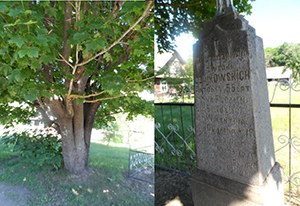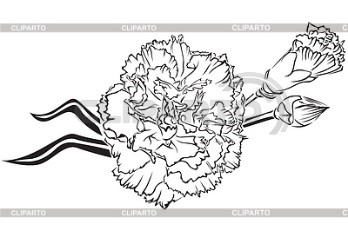- Адрес райисполкома:
- 231471, г. Дятлово, ул. Ленина, 18
- Электронная почта райисполкома:
- isp@dyatlovo.gov.by (для деловой переписки)
- Телефон райисполкома: (8-015-63) 6-16-91
- Факс: (8-015-63) 6-14-47
- Режим работы райисполкома: понедельник - пятница
- с 8.00 до 13.00 и с 14.00 до 17.00
- выходные дни - суббота, воскресенье
Антон Чайковский. Семиствольный клен
 Геноцид против местного населения останется в памяти тех, кто выжил и никогда не забудет их преступлений в годы Великой Отечественной войны.
Геноцид против местного населения останется в памяти тех, кто выжил и никогда не забудет их преступлений в годы Великой Отечественной войны.
Это случилось во время проведения карательной операции немецко-фашистских захватчиков против партизан в декабре 1942 года. Фашистские каратели, которые размещались в Рудаяворском гарнизоне, проводили операцию «Гамбург». Для борьбы с партизанами был издан оперативный приказ начальника СС (СС- охранные отряды немецкой армии) и полиции Беларуси Готберга от 7 декабря 1942 года – уничтожение партизанских формирований и тех, кто оказывает содействие партизанам в их борьбе против гитлеровского «нового порядка». Врагами они считали каждого партизана, еврея, цыгана и подозрительных лиц. Пленные передавались на допросы службе СД (служба безопасности рейхсфюрера). По сведениям вражеской разведки было установлено, что « … в районе развилки рек Неман – Щара и на небольшой полоске берега Щара – Белица – Слоним находятся крупные банды партизан в 8 лагерях с сильной передовой охраной …». Для проведения операции были сконцентрированы большие карательные силы. Среди них 2-ой полицейский полк с двумя батальонами связи, два отдельных полицейских батальона, литовский полицейский батальон №15, украинский полицейский батальон №115, латвийский полицейский батальон №272 с четырьмя ротами (полковых минометов). Кроме этого были прикомандированы: рота, 13-ый жандармский взвод и войска 23-его учебного батальона вермахта из г. Лида. Вечером, 12 декабря 1942 года, каратели начали наступление. К приказу было дополнение: «Отдельные подразделения боевой группы Готберга на пути следования к линии имеют право безжалостно расправляться с лицами и деревнями, которые содействуют врагу». Вот в таких обстоятельствах и встретились с карателями жители небольшой деревеньки Новоселки, в настоящем Поречского сельского совета (на начало Великой Отечественной войны в деревне было 39 дворов и проживало 96 человек). 14 декабря 1942 года карательные отряды фашистов из Рудаяворского гарнизона ворвались в деревню.
«Немцы начали поджигать сараи, – рассказывал 84-летний житель деревни Леонид Иванович Шалесный. – Загорелся сарай Антона Иосифовича Чайковского. Скоро начали разрываться патроны и другие взрывчатые вещества. Оказывается, местный учитель собирал оружие и прятал его под крышей сарая Чайковского. Немцы ворвались в дом Антона Чайковского и расстреляли шесть членов его семьи. Но один сын, Михаил, которому было 7 лет, выбежал на улицу. Говорили, что он просил карателей не убивать его. Разъяренные фашисты схватили мальчика и бросили в дом. Они быстро заколотили входные двери и подожгли. В доме сгорели убитые члены семьи Антона Чайковского и живой – маленький Михаил. На следующий день родные Чайковских и соседи пошли на пожарище, собрали в простынь останки сгоревших и похоронили их в одной могиле».
После войны местные жители общими усилиями сделали надгробный памятник, который стоит и сейчас. На памятнике на польском языке фамилии и имена погибших.
Навсегда местные жители, случайные прохожие, путешественники будут знать о тех, кто стал жертвой убийц и нелюдей. Это: Антон Иосифович Чайковский, 1887 г. р. Феломена Павловна Чайковская, 1897 г.р., их дочери – Валентина, 1922 г.р., Ирина, 1925 г.р., Ядвига, 1929 г.р., сыновья – Иосиф, 1937 г.р., Михаил, 1934 г.р.
Земляки чтут память о своих погибших односельчанах, ведь это нужно не мертвым, а живым.
Символично, что с левой стороны от могилы погибших земляков вырос могучий клен, который выпустил из одного корня семь самостоятельных деревьев. Семь кленов, семь погибших, сем живых воспоминаний о тех, кто погиб безвинно. А клен, как почетный часовой, продолжает расти и напоминать о трагедии тех далеких лет Великой Отечественной войны.

Historical memory. Family of Anton Tchaikovsky.
 The genocide against the local population will remain in the memory of those who survived and will never forget their crimes during the Great Patriotic War. It happened during the punitive operation of the Nazi invaders against partisans in December 1942. The fascist punishers, who were stationed in the Rudayavor garrison, carried out Operation “Hamburg”. To combat the partisans, an operational order was issued by the head of the SS (SS-security detachments of the German army) and the police of Belarus Gotberg dated December 7, 1942 - the destruction of partisan formations and those who assist the partisans in their struggle against the Nazi "new order". They considered every partisan, Jew, gypsy and suspicious persons as an enemy. The prisoners were handed over for interrogation to the SD service (Reichsführer's security service). According to enemy intelligence, it was found that "... in the area of the fork of the Neman - Shchara rivers and on a small strip of the bank of the Shchara - Belitsa - Slonim there are large bands of partisans in 8 camps with strong forward guards ...". Large punitive forces were concentrated to carry out the operation. Among them there was the 2nd police regiment with two communications battalions, two separate police battalions, Lithuanian police battalion No. 15, Ukrainian police battalion No. 115, Latvian police battalion No. 272 with four companies (regimental mortars). In addition, a company, the 13th gendarmerie platoon and troops of the 23rd training battalion of the Wehrmacht from the city of Lida were sent on a mission. In the evening, December 12, 1942, the punishers started an offensive. There was an addition to the order: "Separate units of the Gotberg battle group on the way to the line have the right to ruthlessly crack down on persons and villages that assist the enemy." In such circumstances, the inhabitants of the small village of Novoselki met with the punishers, in the present Porechie village council (at the beginning of the Great Patriotic War, there were 39 households in the village and 96 people lived). On December 14, 1942, Nazi punitive detachments from the Rudaiavor garrison broke into the village.
The genocide against the local population will remain in the memory of those who survived and will never forget their crimes during the Great Patriotic War. It happened during the punitive operation of the Nazi invaders against partisans in December 1942. The fascist punishers, who were stationed in the Rudayavor garrison, carried out Operation “Hamburg”. To combat the partisans, an operational order was issued by the head of the SS (SS-security detachments of the German army) and the police of Belarus Gotberg dated December 7, 1942 - the destruction of partisan formations and those who assist the partisans in their struggle against the Nazi "new order". They considered every partisan, Jew, gypsy and suspicious persons as an enemy. The prisoners were handed over for interrogation to the SD service (Reichsführer's security service). According to enemy intelligence, it was found that "... in the area of the fork of the Neman - Shchara rivers and on a small strip of the bank of the Shchara - Belitsa - Slonim there are large bands of partisans in 8 camps with strong forward guards ...". Large punitive forces were concentrated to carry out the operation. Among them there was the 2nd police regiment with two communications battalions, two separate police battalions, Lithuanian police battalion No. 15, Ukrainian police battalion No. 115, Latvian police battalion No. 272 with four companies (regimental mortars). In addition, a company, the 13th gendarmerie platoon and troops of the 23rd training battalion of the Wehrmacht from the city of Lida were sent on a mission. In the evening, December 12, 1942, the punishers started an offensive. There was an addition to the order: "Separate units of the Gotberg battle group on the way to the line have the right to ruthlessly crack down on persons and villages that assist the enemy." In such circumstances, the inhabitants of the small village of Novoselki met with the punishers, in the present Porechie village council (at the beginning of the Great Patriotic War, there were 39 households in the village and 96 people lived). On December 14, 1942, Nazi punitive detachments from the Rudaiavor garrison broke into the village.
“The Germans started setting fire to the barns,” said 84-year-old resident of the village Leonid Ivanovich Shalesny. The barn of Anton Iosifovich Tchaikovsky caught fire. Soon the cartridges and other explosives began to explode. It turns out that a local teacher collected weapons and hid them under the roof of Tchaikovsky's barn. The Germans broke into the house of Anton Tchaikovsky and shot six members of his family. But one son, Mikhail, who was 7 years old, ran out into the street. It was said that he asked the punishers not to kill him. Furious Nazis grabbed the boy and threw him into the house. They quickly boarded up the front doors and set them on fire. The dead members of the family of Anton Tchaikovsky and the living - little Mikhail were burned in the house. The next day, the relatives of Tchaikovsky family and neighbors went to the conflagration, collected the remains of the burnt ones in a sheet and buried them in one grave.
After the war, local residents jointly made a tombstone, which still stands today. On the monument in Polish are the names and surnames of the dead.
Forever locals, passers-by, travelers will know about those who fell victim to murderers and non-humans. These are: Anton Iosifovich Tchaikovsky, born in 1887. Felomena Pavlovna Chaikovskaya, born in 1897, their daughters - Valentina, born in 1922, Irina, born in 1925, Yadviga, born in 1929, sons - Joseph, born in 1937, Mikhail, 1934.
Countrymen honor the memory of their dead fellow villagers, because it is necessary not for the dead, but for the living.
It is symbolic that on the left side of the grave of the dead fellow countrymen, a mighty maple tree has grown, which has released seven independent trees from one root. Seven maples, seven dead, seven living memories of those who died innocently. And the maple, like an honorary sentinel, continues to grow and remind of the tragedy of those distant years of the Great Patriotic War.
It is symbolic that on the left side of the grave of the dead fellow countrymen, a mighty maple tree has grown, which has released seven independent trees from one root. Seven maples, seven dead, seven living memories of those who died innocently. And the maple, like an honorary sentinel, continues to grow and remind of the tragedy of those distant years of the Great Patriotic War.














